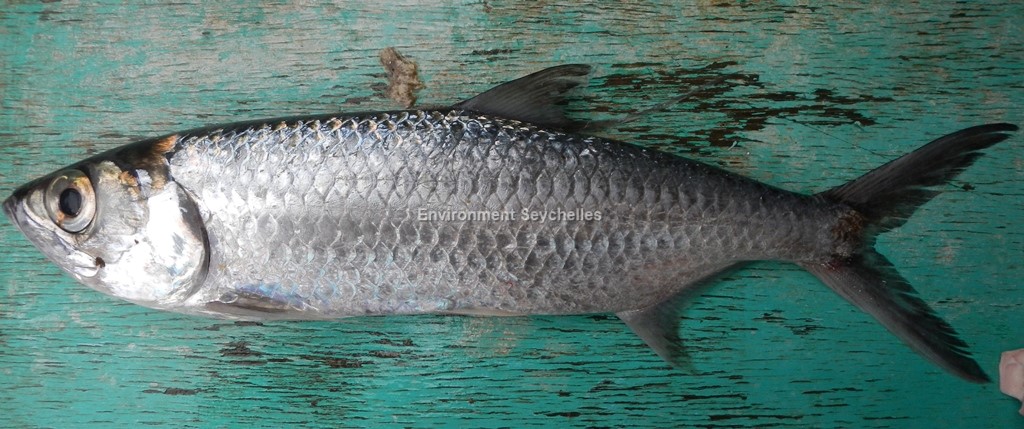Description:
Dorsal spines: 0; Dorsal rays: 16-21; Anal spines: 0; Anal rays: 23-31.
Body moderately deep, deepest in middle before tapering at both ends. Eyes large covered with adipose tissue. Mouth large, jaws extending to posterior
margin of eye, lower jaw projecting beyond snout. Teeth small. Scales large. Fins lack spines. Dorsal fin origin at about midpoint of body, last ray
elongate and filamentous. Pectoral fins situated ventrally. Pelvic fins abdominal. Conspicuous axillary scale at the base of each pectoral and pelvic fin.
Caudal fin deeply forked.
Colour. Blue-green dorsally, flanks and ventral surface silvery. Fins yellowish.
Size:
Maturity: Lm unknown. Range unknown. Max Length: 60 cm TL. Commonly to 30 cm SL and 45 cm SL for males and females respectively.
(A maximum size of 1.5 m TL has been reported, however, this record needs to be verified).
Habitat and Ecology:
A coastal pelagic species (depth 0-50 m) may range inland up rivers. Young inhabit river mouths, inner bays, and mangrove forests. Tolerate a wide pH
range and salinities. Mainly diurnal. Feeds on crustaceans, insects and fishes. Often feeds beneath floating aquatic vegetation. Modified swim bladder
allows it to breathe air in low oxygen aquatic environments. Commonly observed near the surface in shallow inshore waters. Juveniles feed on plankton.
Breed offshore, possibly throughout the year. Larvae swim or drift with tidal currents and recruit to shallow coastal nurseries in 20-40 days
post-hatching.
Fishery Status:
This species is not protected or subject to fishery regulations. It is caught in the gill net and beach seine fisheries, but is an uncommon component of
the catch.
Notes:
References:
Adams, A. et al. (2016). Megalops cyprinoides. The IUCN Red List 2016: http://dx.doi.org/10.2305/IUCN.UK.2016-3.RLTS.T166868A46642796.en. (15/07/19).
Fischer, W. & G. Bianchi (eds), (1984). FAO species identification sheets for fishery purposes. Western Indian Ocean; (Fishing Area 51). Prepared and
printed with the support of the Danish International Development Agency (DANIDA). Rome, Food and Agricultural Organization of the United Nations, vols 1-6.
Froese, R. & D. Pauly. (Eds.) (2019). FishBase. https://www.fishbase.se/summary/227 (15/07/19).
Gomon, M.F. & Bray, D.J. (2019). Megalops cyprinoides in Fishes of Australia, http://fishesofaustralia.net.au/home/species/1991 (15/07/19).
Citation:
Nevill, J.E.G. (2019). Megalops cyprinoides, Indo-Pacific tarpon. Seychelles Seatizens. www.seatizens.sc. https://seatizens.sc/species/megalops-cyprinoides-broussonet-1782/ (edited 23/08/22).


